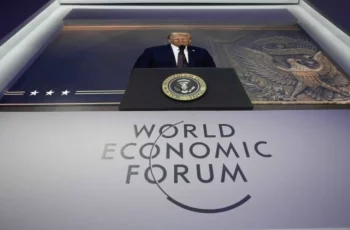Alcohol-free wine… Non-alcoholic beer is already being produced, and now we are getting to non-alcoholic wine. Does it sound modern? No, this drink is actually 100 years old, so modern aspirations to non-alcoholic wine can be called a continuation of traditions, the foundations of which were laid in Italy.
Already in the thirties of the twentieth century, Italian wine enthusiasts made the first attempts to develop non-alcoholic or low-alcoholic drinks based on grape raw materials. Let’s dive a little into history.
It all started with “Il Commercio Vinicolo”, a printed publication that was founded on 6 April 1929 by Arturo Marescalchi (This publication was later renamed “Il Corriere Vinicolo” and still exists today!). In the front page of that historic April issue, Arturo proposed a breakthrough idea for his time – to serve white wines cold “like serving beer” and, more importantly, to do so outside of a meal time (fuori pasto). This practice already existed in Alto Adige, in Austria and in Germany, but it was necessary to popularise something more national, more Italian, Thus, the famous wine ‘promo’ (quoted from that issue of Il Commercio Vinicolo) was born:
“it is the drink that really quenches the thirst, gives tone to the nerves and muscles, phosphorus to the brain, brio to the spirit, and because it is Italian, very Italian”.

It is noteworthy that already in the thirties there was an attempt to place wines in the category of “beverages/soft drinks” by reducing the alcohol level. It was suggested to ‘lighten’ or de-alcoholise wine by diluting it with water (in half) and adding lemon juice or a lemon slice.
However, back then, the drive to reduce alcohol in soft drinks was not, if I may say so, ideological in nature. Alcohol was perceived as a class of drinks, often linked to national culture; thus, a glass of beer in the German-speaking regions of Europe on a hot day is firstly a way to cool down, to refresh oneself, secondly a drink for socialisation, a social ritual in the same way as a cup of coffee or tea in different countries.
Wine culture is still part of the gastronomic culture, in Italy it is sacred in general, and in Russia the food culture is just growing. However, alcohol is incompatible with a large number of situations – driving, pregnancy, health restrictions, but you want to drink, or to sit or stand nicely with a glass since the role of “having a glass of wine” in the social integration of a group of people is very high. But the decline in demand for alcohol, or rather the growth in demand for non-alcoholic beverages, including wine or based on wine raw materials is a way not to be out of the picture, it gives one the opportunity to continue to participate in social life, not to fall out of the generally accepted drinking practices, without sacrificing one’s own health or beliefs.
If you think about it, there is something in it, a qualitatively new leap.

The non-alcoholic wine market in Italy
This market is booming, above all for non-alcoholic sparkling wines. The leader of many ratings is Prima Pavé Rosé Brut – Spumante analcolico da vino dealcolato – ‘non-alcoholic sparkling wine made from de-alcoholised wine’ (or de-alcoholised) and other sparkling wines.
The superiority of sparkling among non-alcoholic wines is due to the fact that the bubbles seem to hide the absence of alcohol in the drink. Right, right, right, so we believed. Rosé (rosé wines) are preferred because they are thought to retain a more complex bouquet. There is little smell, more flavour (logically, no alcohol, lower volatility).
What is also noteworthy is how they are named. For example, at one historical winery in the historical and geographical area of Monferrato (Piedmont region), the first non-alcoholic wine made entirely from Sauvignon Blanc grapes was christened Winot Bianco Dry – quite an interesting substitution of the word “vino” (wine in Italian) with an alternative spelling. Other words are: ‘frizero’ – a blend of ‘fri’ (“free”) + ‘zero’, Myalcolzero, Alternativa Rosato.
Non-alcoholic wines, just like classic wines, are taken seriously from the point of view of gastronomic combinations, as are the notes, the body of the wine, the aftertaste and successful gastronomic pairings.
But not everyone in the industry shares the euphoria. According to technology, ‘non-alcoholic’ is when they made a wine and then removed the alcohol from it (there are different ways of how, but that’s not what we’re talking about now). The idea is good, but the problem is that together with alcohol, some of the flavours that are embedded in the berry and are revealed at the moment of fermentation are evaporated from the wine. This also leaves with alcohol, and the wine becomes ‘poorer’. According to Artur Sarkisyan, head of the Union of Sommeliers and Experts of Russia, “Non-alcoholic wine will always be simpler in flavour, as it is alcohol that ensures the volatility of many aromatic compounds.
One way or another, those interested in such wines will have to break the rules not only by the very fact of drinking alcohol-free wine. That is, it is no longer an oxymoron, but a whole ‘drinking’ culture with emerging rules, more precisely adapting the rules of classical oenology. For example, red non-alcoholic wines are served chilled – this is already an immutable rule, a “new ethic”.
But whether this new ethics will take root in countries like Russia and Italy or will remain a trend, a fashion that is bound to pass is a question.
Cin-Cin! Prost! Cheers!
Sources:
https://myalcolzero.it/blogs/notizie/vino-dealcolato-una-storia-lunga-un-secolo










Comments